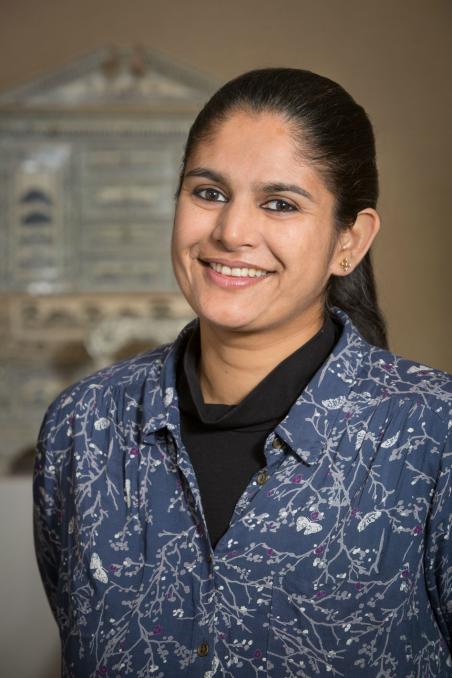Contribute
| Lokvani Talks To Sona Datta, Curator Of South Asian Art, PEM |
Nirmala Garimella
02/26/2014
Sona Datta is an art historian and the new museum curator of the Peabody Essex Museum, specializing in the visual culture of South Asia. Sona was recently awarded an Art Fund prize to run a curatorial project at the National College of Arts in Lahore. She is also now developing a series with the BBC on Pakistan's rich cultural heritage. Datta was awarded the GWH Rylands Prize for Excellence during her time at Cambridge University, where she achieved a BA in History of Art from Kings College. She followed this degree with an MA in South Asian Studies at the University of London, and obtained her PhD at Cardiff University. Datta is a member of the Society of South Asian Studies and the American Council for Southern Asian Art. Born in London, she has also lived in India, Indonesia and Switzerland. She speaks Bengali and has studied Tamil and Sanskrit. Her doctoral thesis is to be published as a monograph by Niyogi Books in 2016. What made you come across the pond to Boston and join PEM? London has been my home all my life. Before coming here, I spent eight years at the British Museum. Even at that time, Peabody Essex Museum had a wonderful reputation for having some of the finest collections on South Asia. Its place internationally for representing the art of the modern era, from the period of British colonial rule to the present, in what is modern-day India, Pakistan and Bangladesh is well known. As someone who specializes in visual culture, and passionate about modern art post- 1947 this seemed a perfect opportunity. Is this the first time that PEM is having a lead curator for South Asian Art? No, Susan Bean, my predecessor and a scholar of great repute had done some extraordinary work at PEM. As you know, in 2001, the acquisition of the Chester and Davida Herwitz Collection of post-Independence art from India established PEM as the first museum outside of India to focus on the achievements of its modern artists. Last year we had 'Midnight of the Boom' and it was received extremely well. I want to build on this collection. Your PhD thesis was based on the Pandya Dynasty in the early 6th to 11th centuries. Can you elaborate on it a bit? Once while I was at the Metropolitan Museum in New York, I came across this medieval sculpture of Vishnu and it was mind blowing. I wanted to find out more but did not have more information. It was at this time that I visited Tamil Nadu and decided to do my thesis on that subject. What I tried to reappraise is the paradigm of how we look at Indian architecture. All this work is to be published into a book in 2016 How do you hope to reach out to the diaspora here? Shortly after arriving at the British Museum . I worked to co-curate the groundbreaking “Voices of Bengal†season. The project attracted more people of South Asia more than any project in the British Museum’s history. My approach has always been attracting new audiences and particularly engaging diaspora communities. So I will be focusing on understanding and meeting those communities here. Share with us your vision of what you hope to bring to the collection? My work here is to configure the narrative of not only India but all of South Asia. One of the frustrations I had and maybe it was Britain’s history with the sub-continent was that much of the engagement was with Mughal painting and Rajput art but no one was really engaging in modernization post 1947.I would meet people in Delhi and other places and they would ask me when the museum will engage in modern India. That is one of the things that attracted me to the PEM. I think the institutions in America are doing it better than institutions in Europe. I think we can do more. It is not just about presenting South Asian art. The global picture is changing and things need to be updated. In India art is everywhere – in saris , textiles,on the walls, at homes. It is a different kind of framing. You have to understand that. I would like to present a three dimensional approach or a four dimensional approach to presenting art and culture at PEM. This may mean discussions, music, books, dance, and poetry. I am excited by objects and material culture. I think it is important to have these intellectual arguments accessible to those who haven’t studied art history. Museum is the portal for that and what makes it more meaningful.
You may also access this article through our web-site http://www.lokvani.com/
